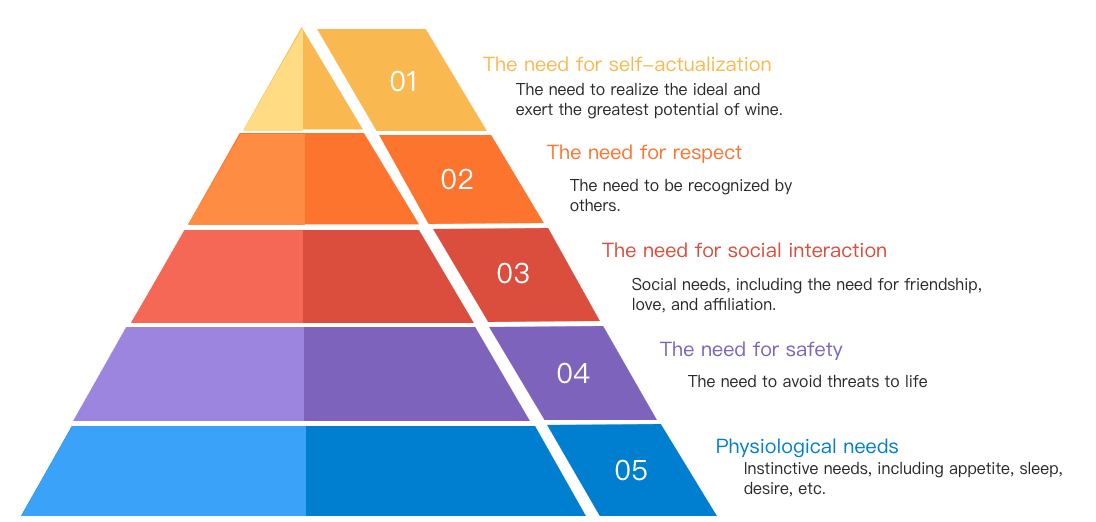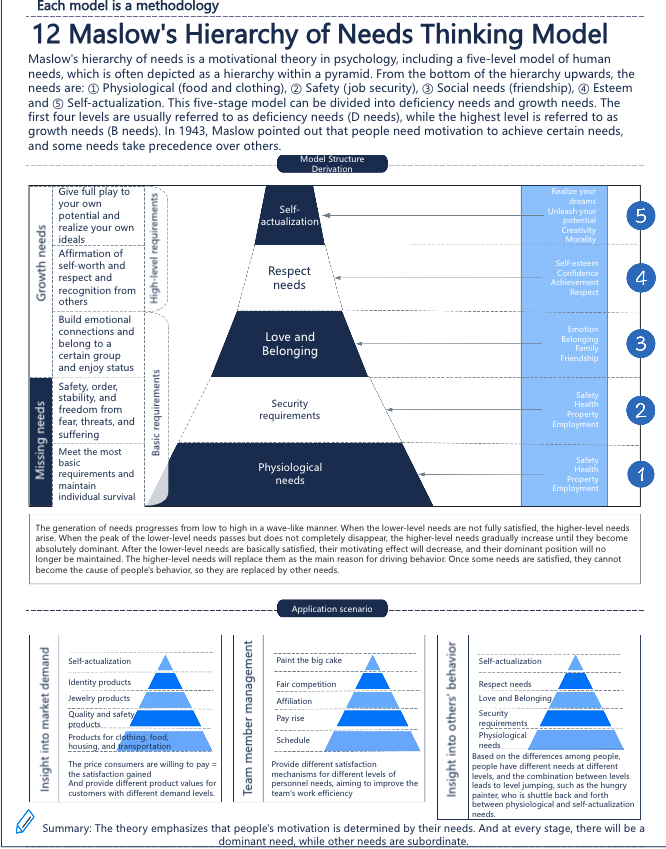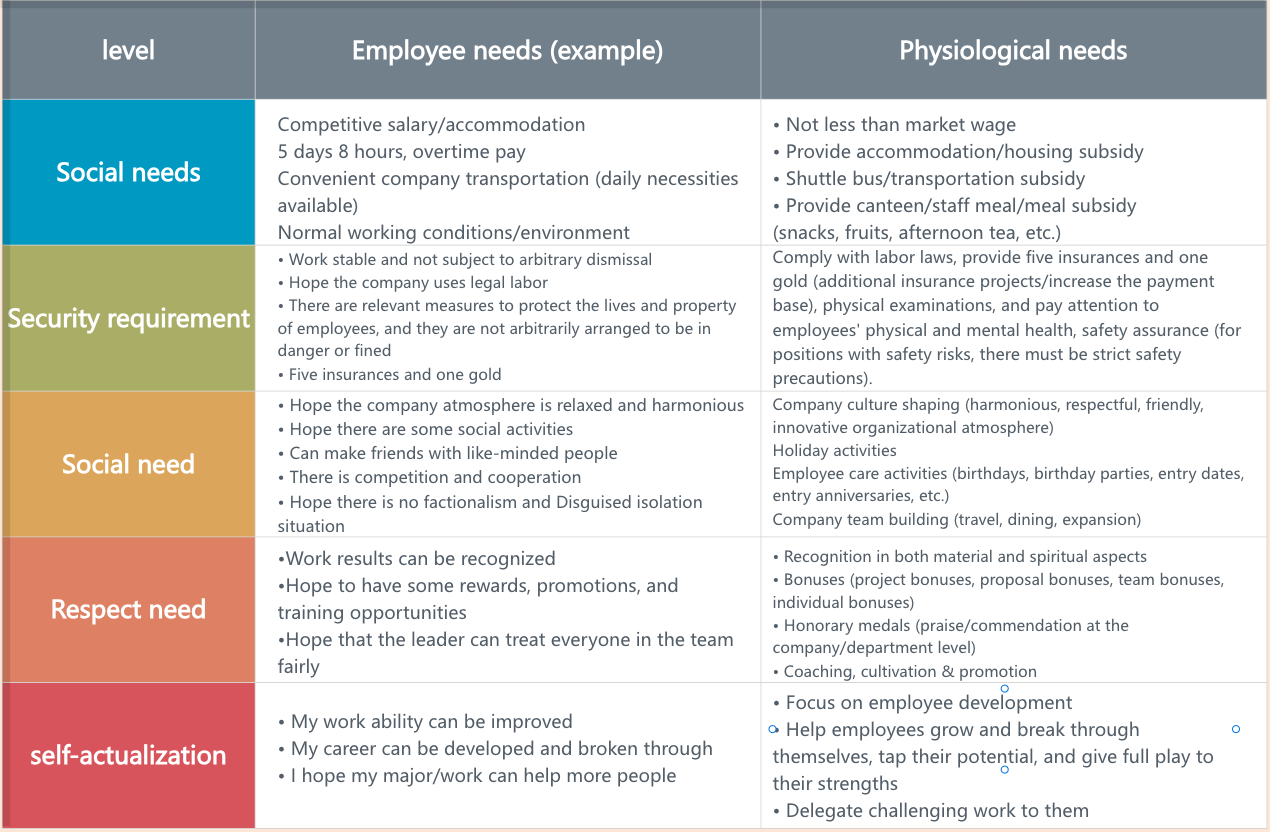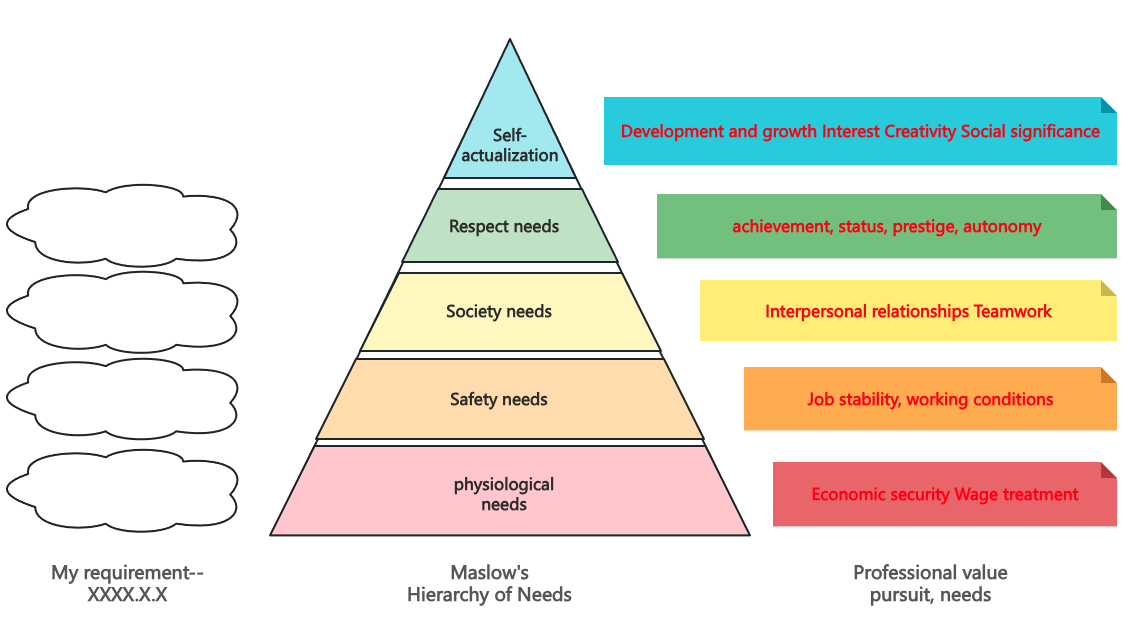Maslow's Hierarchy of Needs is a classic and influential theory in the field of psychology. Proposed by psychologist Abraham Maslow in the 1940s, the theory attempts to explain how human motivation is formed and how it develops. Maslow believes that human needs can be organized into a hierarchy, and these needs increase step by step from the most basic physiological needs to the highest level of self-actualization needs in order of priority. In ProcessOn canvas, we can clearly see Maslow's hierarchy. At the same time, ProcessOn supports collaboration, and team members can discuss with each other. To achieve a deeper understanding. This article will introduce Maslow's requirements theory in conjunction with ProcessOn template community.

Maslow has five levels of needs
Maslow's hierarchy of needs divides human needs into five main levels, each of which builds on the needs of the previous level. The five levels are physiological needs, safety needs, social needs, respect needs and self-actualization needs. Understanding these levels of needs helps reveal what drives people's behavior and their main motivations for living.

Introduction to Maslow's demand thinking model
Physical needs are the most basic needs, including food, water, air, sleep and shelter. They are essential for human survival. Without the satisfaction of these needs, the survival of the individual is threatened, so they are the highest priority needs to be met. According to Maslow, individuals begin to focus on safety needs only after their physical needs are met.

Safety needs include the need for physical safety, economic stability, health security, and avoidance of danger. People want to live in a safe environment, free from potential threats and uncertainty. The satisfaction of security needs can provide psychological stability and life stability, so that individuals can better cope with various challenges in life.

Social needs, also known as the need to belong or the need to love and be loved, relate to relationships, friendships, family, and social connections. Humans are social animals and crave deep emotional connections with others. Meeting social needs can lead to a sense of belonging and emotional support, helping to enhance an individual's sense of well-being and satisfaction.

Respect needs include the need for self-esteem and the need for respect from others. Individuals want to be recognized and respected by others, but also want to be able to self-affirm. The satisfaction of respectful needs makes people feel confident and valuable, and can drive personal development and fulfillment

Self-actualization needs are the highest level needs in Maslow's theory, which refers to the needs of individuals to realize their own potential, pursue personal growth and self-improvement. Self-actualized people often pursue creativity, personal purpose, and self-transcendence. They want to find meaning and purpose in life and realize their own ideals and desires.

Maslow's need theory is not only of great significance in psychological research, but also widely used in many fields such as management, pedagogy and social work. In business management, understanding the hierarchy of employee needs helps to formulate more effective incentive measures and employee care strategies.
For example, companies can improve employee satisfaction and work performance by providing a good working environment and benefits to meet the physiological and safety needs of employees, and by meeting respect needs through employee training and promotion opportunities.

Maslow's needs theory practice
Although Maslow's needs theory has made important contributions to explaining human motivation, it also has some limitations. First, the hierarchical structure of the theory is too simplistic, ignoring the complexity and diversity of human needs. The hierarchy of needs may not be exactly the same across individuals and cultures, and these needs may exist at the same time rather than being strictly hierarchical.
Secondly, Maslow's theory is mainly based on the Western cultural background, and its universal applicability to other cultures is controversial. In some cultures, the need for sociability may be placed higher than the need for respect, so the universality of the theory needs to be further explored and tested.
In summary, Maslow's needs theory provides a valuable perspective to help us understand the drivers of human behavior and motivation. ProcessOn in Maslow theory needs to have a large number of templates to provide use, no need to draw, one-click cloning, appropriate modification of the copy can be. Whether in business management, education or personal development, understanding and applying Maslow's needs theory can help us better meet the needs of ourselves and others, improve the quality of life and work efficiency, and using ProcessOn tool helps us better understand our own/external factors, so that we can have a better life.
